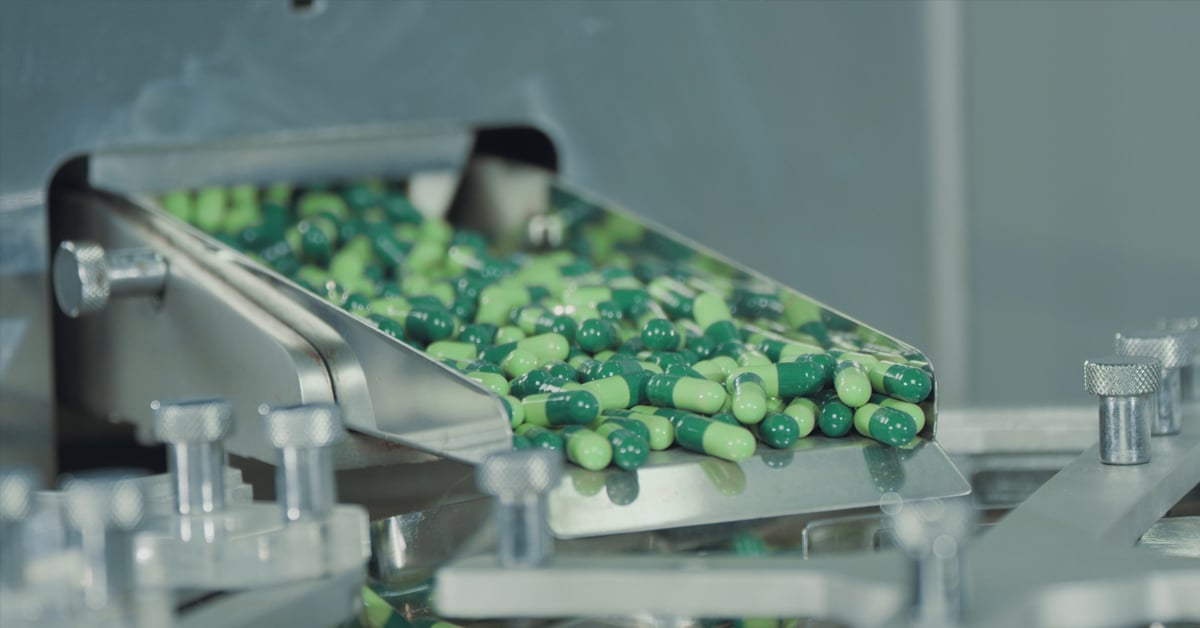Environmental concerns are at the forefront of discussions in all industries and pharma manufacturing is no exception. According to a report by the Medicines Manufacturing Industry Partnership, Follow the Green, High-tech Road, the healthcare sector is responsible for up to five per cent of all global greenhouse gas emissions. The report suggests the UK has a major opportunity to establish itself as a leader in net zero medicines manufacturing — providing the correct infrastructure and technology is used.
Quantifying pharmaceutical emissions
There is currently no global standard for quantifying greenhouse gas emissions at the unit level in pharma. However, many businesses are taking initiative to develop their own standards and work towards individual targets. Pfizer, GSK, AstraZeneca and NHS England, for example, have all published their own ambitious targets to reach at least a 90 per cent reduction in carbon emissions in the coming years.
Environmental goals are usually developed at board level. However, the emphasis on sustainability cannot stop at the boardroom door. Ultimately, it is down to operating teams in manufacturing to deploy environmental strategies, and the first step in doing so always comes down to data.
Pharma’s data dilemma
Pharmaceutical manufacturing has a wide range of procedures to consider when analysing emissions. Raw materials processing is among the most energy intensive stages, where materials are ground, blended or mixed mechanically. Likewise, systems used for heating, cooling, dying and freeze-dying medicines can require significant energy inputs. That’s not to mention the increased level of sanitation required in production facilities with clean-in-place (CIP) and steam-in-place (SIP) procedures.
Gathering data from this range of processes can be difficult. Equipment often varies in original equipment manufacturer (OEM), age and communication protocol, with some systems operating with propriety software. Without standardising this data and visualising it in a single way, it is impossible to understand the complete energy profile of a facility — both for the c-level executives launching these schemes and the engineers orchestrating them.
Leveraging technology for sustainability
Manufacturing software platforms, like zenon from COPA-DATA, can be deployed across an entire site, regardless of the variety of equipment or the communication protocols used. The platform captures data from every process and visualises this information either in real-time or as historical records. For this reason, many customers in the life sciences realm use zenon to ensure end-to-end transparency and regulatory compliance. With growing pressure from board level to improve environmental practices too, zenon is increasingly used as an energy data management system (EDMS).
Having access to a wealth of energy data allows engineers to undertake process mapping: a method of outlining a manufacturing workflow and breaking it down into sub-processes, such as heating, motors, lighting, compressors and so on. Not only does this highlight easy energy reduction wins — i.e. idle machines that could be switched off or energy-intensive motors that could be complemented with a drive system — but it also helps to determine any hidden areas of excess energy use.
Water use in pharma
Water consumption is another important environmental consideration for life science manufacturers. High volumes of water are essential for clean down processes. In fact, some organisations must work with local councils to install additional water sources. Executive boards will be well aware of the environmental and societal pressure to reduce this consumption, but cannot determine areas of water waste without proper data.
With zenon, engineering managers can take informed action to reduce unnecessary water use. Once areas of expenditure are identified, potential strategies include implementing closed-loop systems to recirculate water, replacing low-efficiency equipment with high-efficiency alternatives, or even applying continuous manufacturing methods to reduce stoppages between batches.
As the global focus on environmental concerns intensifies, the pharmaceutical industry grapples with its role in emissions and resource consumption. Without a current global standard, it is up to life sciences organisations themselves to work with local governments, trade associations and their partners to ensure the industry is working towards a net zero goal. Technology will be key to making this possible.

